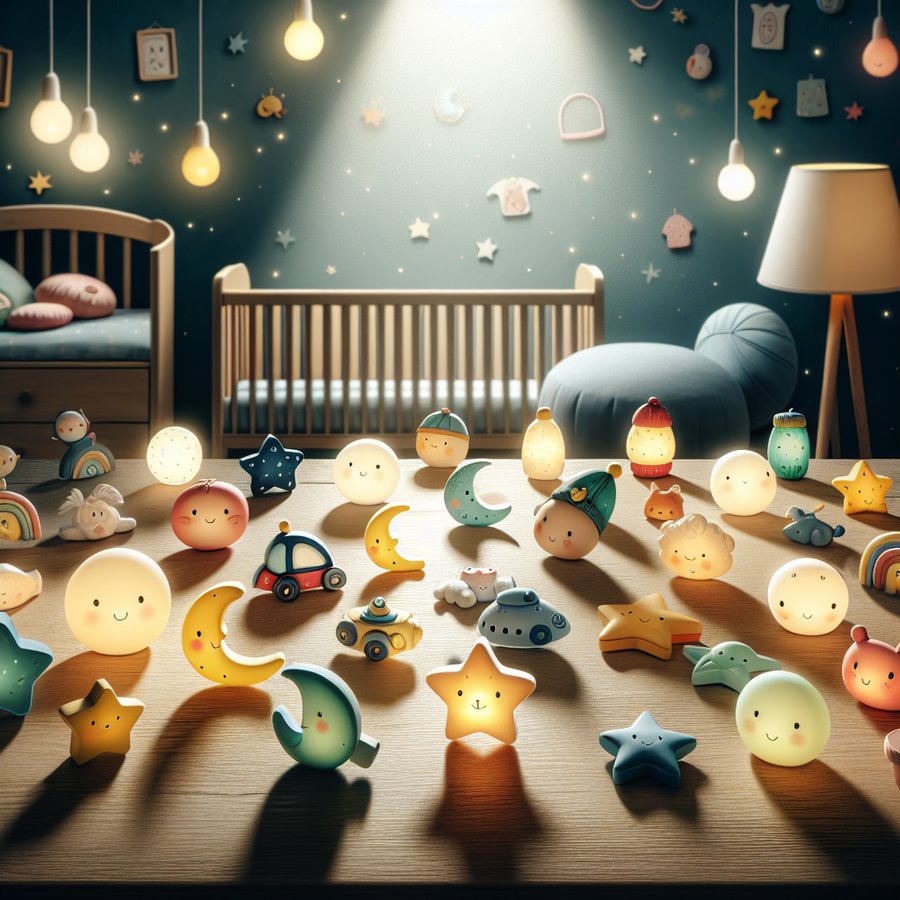Choosing the right night light for baby’s room is a crucial decision that parents face. Not only does it provide the necessary illumination for late-night diaper changes and feedings, but it also plays a significant role in creating a soothing and sleep-conducive environment for your little one. In this guide, we’ll explore the key factors to consider when selecting a night light, ensuring your baby’s comfort and safety through the night.
Understanding the Benefits of a Night Light in Baby’s Room
Night lights offer more than just visibility; they’re instrumental in promoting better sleep habits and providing reassurance. A gently lit room can help babies and toddlers feel secure, making it easier for them to fall asleep and return to sleep if they wake up during the night. It’s also beneficial for parents, enabling them to move around the nursery without turning on harsh overhead lights that could disrupt the baby’s sleep cycle.
Moreover, choosing the right night light for baby’s room can aid in establishing a healthy circadian rhythm. Soft, warm lights mimic the natural progression of daylight, cueing your baby that it’s time to wind down. This is in contrast to bright or cool-toned lights, which can signal the brain to stay alert.
Choosing the Right Night Light for Baby’s Room
When selecting a night light, there are several features to consider to ensure it meets both your and your baby’s needs. First, consider the brightness. The night light should provide enough light to safely navigate the room without being so bright that it disturbs sleep. Adjustable brightness settings can be particularly useful to find the perfect balance.
Next, think about the color of the light. Research suggests that red and orange hues are less likely to interfere with melatonin production, which is essential for sleep. Avoid blue and white lights, as these can disrupt sleep hormones and make it harder for your baby to fall back asleep. For more insights on how light color affects sleep, visit Sleep.org.
Another important feature is the type of bulb. LED bulbs are energy-efficient and don’t heat up like traditional bulbs, making them a safer option for your baby’s room. Additionally, consider a night light with a timer or motion sensor to automatically turn off the light once your baby is asleep or to light up only when needed.
Top Picks for Baby Room Night Lights
There are countless night lights on the market, but not all are created equal. To help you navigate the options, here are a few top picks known for their safety, comfort, and sleep-friendly features:
The Hatch Baby Rest is a popular choice among parents for its customizable settings. You can adjust the color, brightness, and sound, tailoring the environment to your baby’s preferences. Its programmable features make it an ideal tool for reinforcing bedtime routines.
For a more budget-friendly option, the VAVA Baby Night Light offers touch control, adjustable brightness, and a warm yellow light designed to soothe babies to sleep. Its portable design also makes it easy to reposition as needed throughout the night.
Integrating a night light into your baby’s sleep environment can significantly improve the quality of their rest and your peace of mind. As you consider your options, remember the importance of soft, warm lighting, adjustable features, and safety. For more tips on optimizing your nursery for sound sleep, check out our guide on Optimizing the Nursery for Sound Sleep.
Lastly, don’t forget to consider how your night light choice fits into the broader context of your baby’s sleep routine. Integrating techniques from How to Establish a Sleep Schedule for a Newborn and understanding the Role of REM Sleep in Infant Development can provide holistic support for your baby’s sleep health. Remember, the goal is to create a serene, safe, and comfortable sleep environment that supports your baby’s development and well-being.
Choosing the right night light for baby’s room is just one piece of the puzzle. By considering the factors outlined in this guide and integrating them with broader sleep strategies, you can ensure that your little one enjoys peaceful and restorative sleep. Sweet dreams!













